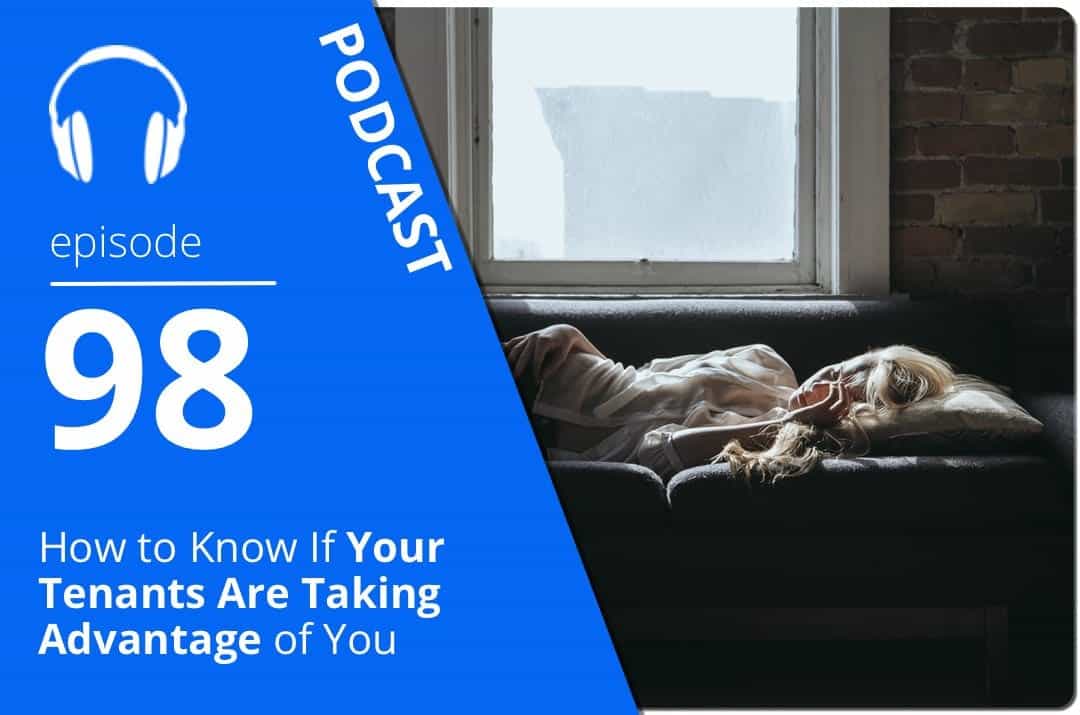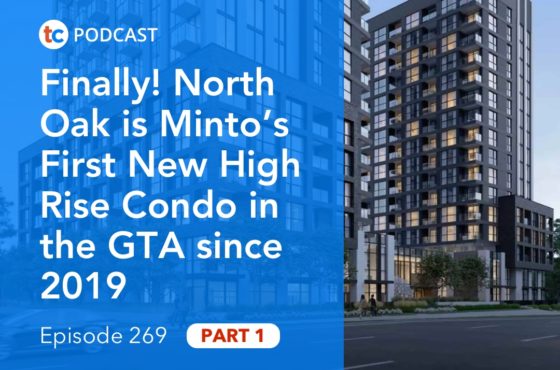How to Know If Your Tenants Are Taking Advantage of You

As a condo investor, how do you know if you are being taken advantage of by your tenants? Are you charging enough for rent? When should you look at refinancing your condo? Andrew la Fleur tackles these questions using a real life case study of a condo investor looking to maximize his returns.
Click Here for Episode Transcript
Andrew: How do you know if you’re being taken advantage of by your tenants, and when is the right time to refinance your investment condos? We’ll take a look at these 2 questions using a real-life case study on today’s episode.
Announcer: Welcome to The True Condos Podcast with Andrew La Fleur, the place to get the truth on the Toronto condo market and condo investing in Toronto.
Andrew: Hi, welcome back to the show. As I said in the intro, we’re going to be looking at a couple of questions today. One is, how do you know if your tenants are taking advantage of you, and the second is, when should you look at refinancing your investment condos?
We’re going to be doing this through a real-life case study. I got a call this week from Tony. Tony said that … Well, I’ll just break down his situation here, first to you, his condo, and his questions are what he should do, and he’s looking for advice. I thought I would just share with you what I shared with Tony this weekend, what I told Tony.
Tony, here’s the situation. Tony has an investment condo in the city. He lives in the east side of the GTA and he has an investment downtown in the Fort York neighborhood, 215 Fort York. He has a one bedroom unit there. He bought the unit in 2007 and he paid about $175,000 for the condo back in 2007. He got possession of the unit in 2010 and he has been renting out that unit ever since right from the beginning is my understanding of what Tony told me. The unit has no parking and no locker. It’s a one bedroom unit around 500 square feet or so, and he’s renting out the unit to the same tenant from the beginning. The tenant is paying $1,250 a month in rent.
Tony is looking for advice. He’s wondering what to do with that unit and he’s wondering about investing in other options, in other properties which we discussed, which I won’t get into on this episode right here, but he wanted to more focus on his unit there that he has and highlight a couple of issues.
The first issue that I brought up with Tony, the first point is that he is, and you probably knows this, just by hearing the description, he’s renting out his unit way, way, way under current market value. He’s renting out a 500 square foot one bedroom unit in Fork York neighborhood for 1,250 a month, which is way under market value. Tony did know this I think. He did recognize and he knew that he was doing that. The actual market value of a one bedroom unit in that neighborhood is probably, of what he described, I don’t have all the details, but it’s probably more like $1,450 to $1,500 a month. He’s under market by $200 to $250 a month, which is quite a lot. That is easily a couple, 2 or $3,000 a year kind of range that he is leaving on the table, or that the tenant is keeping in their pocket.
Why is he doing this? Well, I said, right away I said, “Tony, that’s way under value,” and he said, “Yeah, I kind of know that.” “Why are you doing that?” His answer was a very common answer, that a lot of people that I talk to who own investment units, investment properties will say, and it just kind of hurts my ears when I hear it, but they say, “I don’t want to rock the boat.” Essentially that it’s a great tenant, they always pay on time, they never give me any troubles, I don’t want to rock the boat. Well, that’s great and it’s nice to have a good tenant, but that is no reason to be giving someone such a ridiculously below market deal on their rent every single month.
It’s a common thing that I hear everybody saying. I think it’s, again, it goes to mindset, it goes to human nature, it goes to the fact that, yeah, I mean, it’s hard to know when and how to raise the rents on an existing tenant that you have. It’s a little bit easier when the tenant leaves and you have an opportunity to re-rent the property to a new tenant, and you can then look at starting a new relationship and starting the price from whatever the market rate is. But for some reason, human nature being what it is, we don’t like to as Tony said, rock the boat, we don’t want to stir the pot, we don’t want to … There’s a perception that if you increase the rent or you request an increase that the tenant will somehow react negatively perhaps or, I don’t know. Will they damage your property? Will they move out and inconvenience you on short notice? Will your good relationship suddenly go bad?
If any of those things are the case, then obviously this is not a tenant that you want to be having a relationship with. This is not a good customer in the first place. You want to be finding somebody else, if that is the case, if you’re just asking them to pay what is fair and they have some kind of a negative reaction to paying what is fair. To me that’s a major red flag that they are not a good customer and you want to get rid of them anyways.
If they are in fact a good customer and a good person and somebody who believes in fairness and who believes in paying what they should, then there really shouldn’t be any issue at all. They should be the type of person that would clearly say, “Yeah, you know what, I am under market and this is fair what you’re asking me, to start paying the market value,” and they should be able to simply do that. If they’re not, then again that to me is a red flag that that is not a tenant, not a customer that you want to have as a landlord, as a business owner, the business of investment real estate.
What should you do instead? Well, my advice to Tony was you’ve got to raise those rents right away ASAP, as soon as possible. Again, the beauty of condo investing is that condos are not subject to rent controls. Rent control on Ontario where you can only increase the rents on existing tenants by the prescribed amount by the province every year, which is usually somewhere around the inflation area figure of 1%, 2%, something like that, maximum rental increases. That does not apply to condominiums. I’ve written articles about this. I’ll include a link to that in the show notes for this episode.
It’s one of the best kept secrets in the real estate investment world, is that condos are not subject to rent control. As investors we need to be taking advantage of things like this and using them to their fullest potential to maximize our return on investment, obviously without taking advantage of people and with maintaining a sense of fairness of course and ethics. But, this is the law and this is the tool that we have at our disposal to be able to increase the rents on existing tenants at whatever rate or whatever amount we wish.
There’s no limit on that.
Of course, the caveat being if you do let your tenant know that you’re going to be increasing the rent by whatever amount you decide to do that by, because you have the power to do that, the tenant has the ability to move out. That is an option of course and not to pay the increase but rather just to move out instead. But if they choose to stay, then they must pay whatever that increase is, regardless of the amount or the percentage of the increase.
You need to raise the rent as soon as possible, Tony does. More generally for all investors my advice is you want to raise the rents for every tenant every single year. You are allowed one rental increase per year by law in Ontario, and you want to do that every single year. Always, always, always raise the rents for every tenant every single year.
Even if you are above market value, you still want to increase rents. Even if you have a great tenant and everything is going hunky-dory, you always want to increase rents, even if that rental amount is $1 a month. It could be any nominal small amount, just to …
The reason why you want to do that is you want to keep it professional, you want to treat it like a business, you want the tenant to understand that you are a professional landlord, that it is a business for you, that you are not a charity, that you are not looking to be taken advantage of, but also that you are fair and that you are not looking to take advantage of anyone else either. But it does send a clear message and it does set the ground work with your tenant every single year, that they understand that this is a business, that you do want to give them good service and a great place to live at a fair price, but that there are increased costs associated with that every single year, which is absolutely 100% true.
Maintenance fees continually go up, property taxes continually go up, utility costs, insurance, everything is constantly going up. So there you are completely justified in my opinion as an investor by raising those rents every single year. Like I said, even if everything is great, even if you think you’re getting a good price for your unit. Obviously you don’t want to gauging anybody or taking advantage of people as I said, that goes without saying. You want to be ethical always, you want to be fair always. Even if it’s just $1 a month, $2 a month, $5, 10, 15, whatever it is, the tenant understands and the relationship is very clear that this is a business and that you are looking to set a certain tone and to make the relationship very clear to your tenant.
That is the first tip there that I gave to Tony. The second tip is around refinancing. With refinancing, again Tony, if you recall the numbers, you purchased the condo for 175,000, amazing to think, 175,000 back in 2007. Now today that condo is probably worth, again, I haven’t looked at the exact breakdown of the building or anything, but knowing the area and what he’s described to me, it’s probably worth somewhere in the high 200, say 280, 290 sort of a range. Might be higher but we’ll be conservative and we’ll say 280.
It’s probably worth 280. He paid 175. When it comes to refinancing the 80/20 rule applies in terms of being able to pull equity out. When you do the math there’s probably about $80,000 of equity there, assuming he’s paid down his mortgage quite a bit over the last 5, 6 years, which he has. It’s probably around $80,000 of equity sitting there in that property, that might be available for Tony to pull out and to reinvest.
Now I do give Tony props and he did mention that he did refinance the property once. When he took possession of the property in 2010, it had gone up in value quite a bit from the time that he purchased it in 2007. He said he did refinance it at that time and he did pull out, essentially he pulled out his initial deposit, so you put your deposit down and then when the building’s built, you refinance it at the increased value and you pull your initial deposit right back out.
He did that back in 2010. Here we are in 2016 now and the property has gone up in value quite a bit more again, and so there’s another opportunity to pull out some equity again. That would be my second piece of advice for Tony and for any investor is to, again, remember to always refinance your properties every few years, whenever there’s equity, significant amount of equity on the table that you can redeploy, reinvest, buy even more properties, and increase your leverage to increase your ROI, increase your return on investment.
What I said to Tony is he was thinking should I sell this property and take the proceeds and buy another condo or another couple of condos somewhere else with the proceeds. My advice again for Tony and anybody right now in today’s market is do not sell. If you have a property like that that is giving you good cash flow every month, that is increasing in value every month, especially in this hot market, don’t sell. It’s not a good time to sell, because those properties are increasing in value significantly every single month. As soon as you sell you’re losing money the next day. Opportunity cost.
Don’t sell the property. Rather you should refinance it, pull some equity out, tax free. Again, the beauty of refinancing, and this is a whole other episode we can get into, but apologize if this is the first time you’re hearing about the concept of refinancing, and rental increases and all this might be new to you, but it’s a great. Those are 2 great tools to use, every condo investor should use for increasing their ROI, increasing their leverage, and building their portfolio even bigger.
Take that money out, redeploy it, reinvest, buy another property, hold on to the property that you already have. Do not sell, especially in today’s marketplace where that property is increasing in value every single month and giving you great cash flow. That’s the best of both worlds. It’s a great, great tool that we have again at our disposal, refinancing, being able to pull that money out tax free. The government still allows us that, some joys in life and the CRA still allows us some joys in life. That is one of them there.
That is it for today. I hope you enjoyed that little case study on Tony and his unit at Fort York, his little 500 square foot unit. Hopefully you found that useful and maybe some of the information advice applies to your situation and one of your condos in your portfolio right now. Or you can use this information that you’ve learned today for future investments and future decisions as you are building your portfolio over time. One again, thanks for listening, Andrew La Fleur for truecondos.com signing off and we’ll talk to you soon.
Announcer: Thanks for listening to the True Condos Podcast. Remember, your positive reviews make a big difference to the show. To learn more about condo investing come at True Condos Subscriber by visiting truecondos.com.



